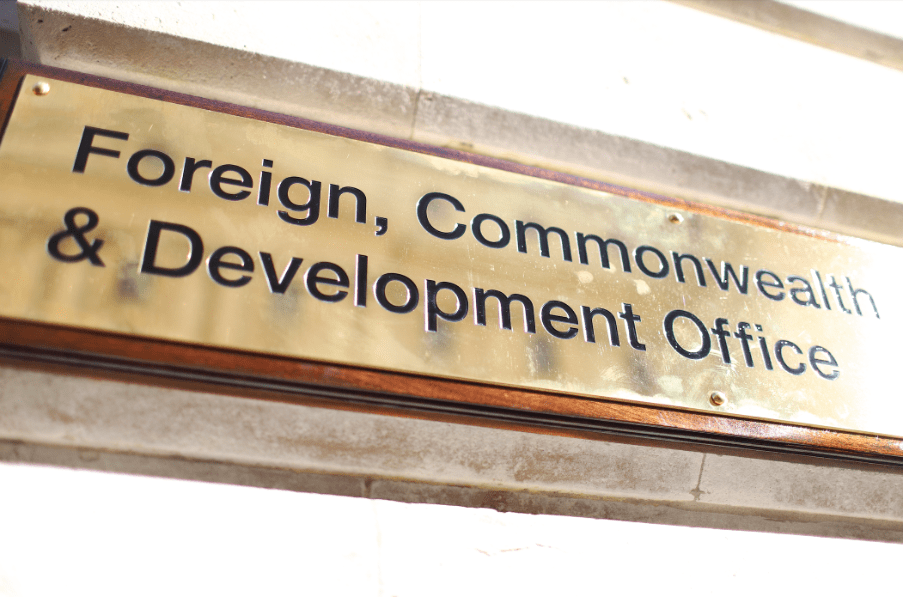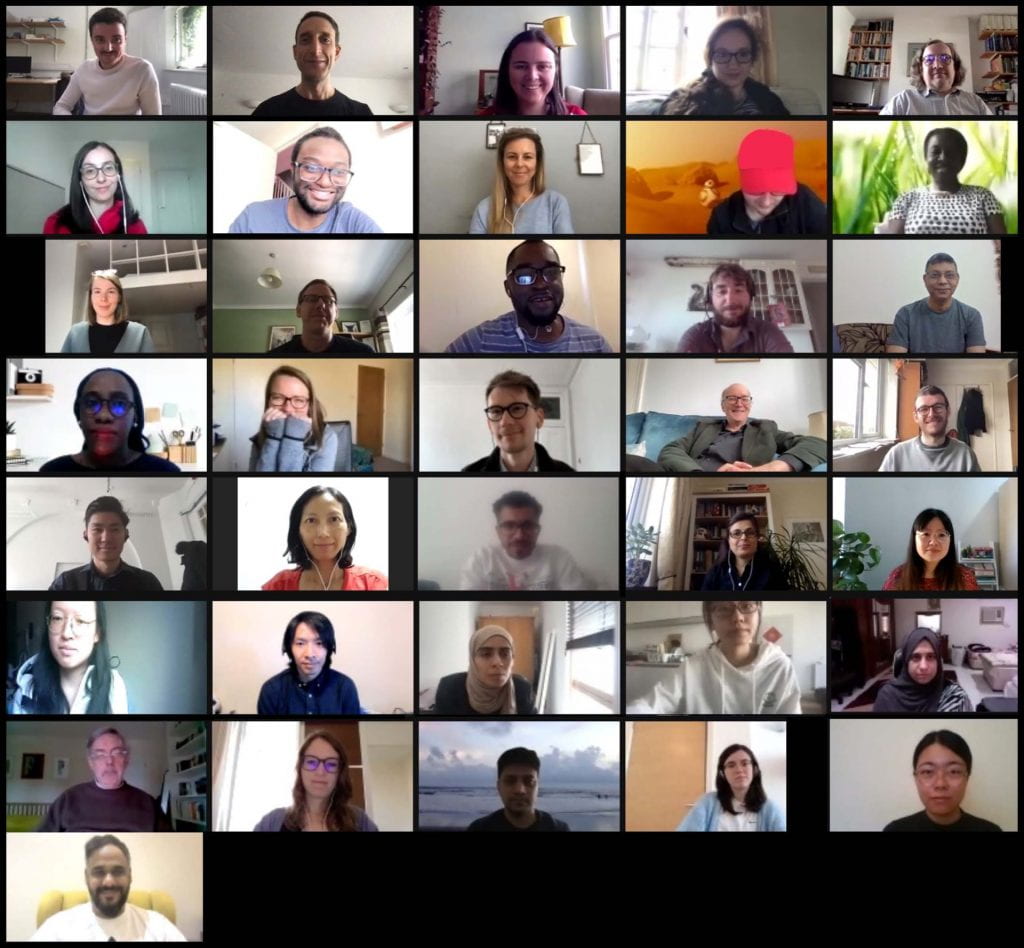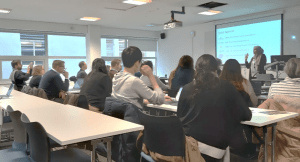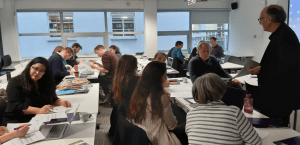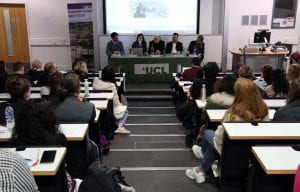Why do warnings matter?
Earlier this year, the UCL Institute for Risk and Disaster Reduction (IRDR) and the Warning Research Centre hosted a one-day online event exploring this question. As part of the IRDR’s 11th Annual Conference we welcomed researchers, students, practitioners, policymakers, the media and the general public to celebrate the launch of the UCL Warning Research Centre. As part of this the attendees enjoyed a diverse program of activities aimed at getting to the root of warnings, why they matter, and how their role, design, use and evaluation can be optimised to prepare for the expected and unexpected.
Our previous article summarised the ideas generated from a panel of experts discussing the aspects of exceptional and expected events. This time, we present the keynote speech from Mami Mizutori, the Assistant Secretary-General and Special Representative of the Secretary-General for Disaster Risk Reduction, United Nations Office for Disaster Risk Reduction (UNISDR).
This blog is part two of a series presenting the key findings from the conference proceedings. The rapporteurs whose notes form this material are Calum MacKay and Simone Phillips, who are both from the University of Glasgow on the MSc Earth Futures Programme. Any mistakes or misrepresentation of the participants’ words are the author’s own.
Part Two: Keynote Speech
Warnings and the Launch of the Warning Research Centre
Presenter: Mami Mizutori, UNDRR | Moderator: Prof Ilan Kelman, UCL
Mama Mizutori is the Assistant Secretary-General and Special Representative of the Secretary-General for Disaster Risk Reduction, United Nations Office for Disaster Risk Reduction (UNISDR). The following summary is based on the notes of event rapporteurs. The full presentation can be viewed on YouTube.
If warnings are placed right, they can serve as a gateway to risk reduction, opening the door to conversation between individuals, communities, and governments. We encounter risk constantly in our everyday lives and are surrounded by risk. Risks are systemic and complex, and it is human nature to procrastinate over things that are complex, but we need to be aware that no decision is risk-neutral. The decisions we make can increase risk and climate change is exacerbating this, already disrupting billions of lives.
EWS are therefore critical to saving lives and reducing risk. Setting up EWS is becoming more economic thanks to technological advances and with use of tech combined with more traditional ways of response.
There are also issues of proactive risk reduction vs reactive response. There is no such thing as a natural disaster, we know that, but those words are put together in the media. When natural hazards are combined with vulnerability and exposure, they create disaster. Good EWS are therefore based on extensive understanding of these three elements and can reach the last mile to reach most vulnerable populations and communities.
Warnings can tell us when something reaches dangerous levels, warning thresholds are useful for preparation in a world of cascading impacts. This means supporting early action to protect us from failure of many systems is vital. For EWS to be successful we need to connect warning to action. It’s essential that EWS are complemented by risk communication, but often we face the challenge where information existed but was not acted upon. We need to focus on preventing disaster rather than on reactive approaches when lives have already been lost.
Hazards we are exposed to are multiple so warnings must reflect this. Currently warnings focus on getting ahead of disaster and reactive measures, but we have further potential to consolidate data of risk information for early warning and action.
The UNDRR coordinate activities to create safer, more resilient communities as custodian agency for Sendai Framework and support all UN member states and stakeholders to implement this framework. Its overall goal is to prevent new and reduce existing disaster risk through implementation of inclusivity. The Sendai Framework is a departure from previous ways of thinking about disaster and represents a paradigm shift from exposure to a people centered approach to DRR, while primary responsibility to implement it resides among the member states. It is a shared responsibility for all stakeholders to do this: an all-of-society approach. UNDRR also has work in early warning—Africa (AUC) as a whole and individual warnings like Malawi and Ethiopia.
Partnerships with academia and science is important for evidence-based risk reduction, and we need evidence to convince people to work on it. Need to understand risk around us, but many countries still face challenges in making this accessible and usable to decision makers. Many lack a risk assessment approach to understand systemic risk. The global risk assessment framework (GRAF) can be used as understanding the systemic nature of risk.
Take Away Message
Early warning systems are vital in order to effectively reduce risk to environmental hazards but they must reflect the unique context of each individual location and community. They must also account for the multiplicity of hazards to ensure a proactive rather than reactive approach to hazard and risk mitigation.
The presentation was then followed by an address to questions from the audience, which are summarised thus:
What Advice would you give to students entering the field?
It’s important to go into the field. It is important to go into the ones that are most at risk and vulnerable to combine your knowledge, your expertise with what you experience on the ground and then come back again to devise systems that bring all this together. We need to make sure that there is a clear pathway for students to get into the field as we are still not preventing enough. We are still not ready enough for disasters. We need to make it a reality for students to have clear career pathways, to be able to make a difference.
I understand that the Sendai Framework is not a legally binding treaty, is there any talk to make it so?
Not at this moment, it’s not a legal document either but does it make it any less because of it? I don’t think so. Sendai Framework is addressing the most pressing challenge that we are facing right now and it has to go hand in hand with the Paris agreement. If it doesn’t go hand in hand we cannot achieve the SDGS. But 2023 will be the midterm point of the Sendai framework and we will have a midterm review. We may make it legal if stakeholders and importantly member states feel that that is necessary.
Is part 2 of the UN report going ahead?
It is going ahead, we are creating a profile of each hazard in first report, that’s the main focus. If we don’t understand the nature of hazard then it is hard to have comprehensive responses. It will evolve.
The spread of misinformation is becoming widespread, why? What do we do about misinformation?
Look at 2019 and even before that around the climate emergency, we have been exposed to a lot of misinformation. So the UN started a campaign called “Verify” This means that when you receive information that you know that this is not true you can verify it and if it’s not true don’t pass it on. The evolved involvement of social media is great but then at the same time if you’re not careful when using social media you can just be a proliferator of misinformation yourself. My message is: let’s stop doing it ourselves first, and the second thing is we need to really look into science and evidence and let’s make the findings, the evidence: accessible. Because of the difficulty in interpreting and assessing science we tend to go for easy solutions or easy answers even if they are false. Science and academia has a very important role here to make your findings accessible so that people understand clearly what is misinformation in this and what is not.
There is a Lack of entry level jobs that don’t require 10 year’s experience, where should we get this experience? There are also financial difficulties. What is the UN doing to help?
It’s all about honing skills and then your expertise on one aspect of this disaster reduction. I would say that you find your niche within the studies but never forget to connect it to all other aspects. Don’t make it a siloed research and in that way I’m sure that it will become a career. The private sector is looking at disaster reduction more than ever. I do believe that the private sector will be looking more and more for risk experts. There are also lots of internship opportunities with us at the UN in not only Geneva, but also Nairobi and Bangkok. There is Sponsorship for those who may need financial help. Also internships at FAO and WFP. We are trying to create more opportunities for students from the global south. We need to do more, we will try to do better.
How could international cooperation support regional early warning practice (global south)?
We are creating African continent-wide early warning system to establish an early warnings operation unit, so the system becomes a regional one. Disasters don’t respect borders if systems stop at borders they won’t be effective. Areas will have even more focused, donors are interested in supporting systems that are transboundary. Providing anticipatory aid, don’t wait until an extreme event happens, instead it’s based one early warning data and provides aid in advance to better prepare people and mitigate the impacts. Not enough money for all disasters anymore. The gap between what is needed and what is provided is growing. Anticipatory aid can help this.
What is the one key thing governments can take away?
To focus on the systemic nature of risk, because still many governments when looking at systemic nature, it actually worsens risk and the multi hazard aspect of hazard. This is something that we saw looking at the national strategies of governments after Covid outbreak. We found out that a lot of them are still quite single hazard orientated and most of them do not look at the systemic nature risk. As a result ,the agencies for disaster risk management agencies for public health are all siloed and they do not talk to each other. Therefore, the response to systemic risk is not systemic nor comprehensive. This is where we need to change; and early warning systems can also be a very important part of it by being a multi hazard early warning system. I think this is the most important lesson. Let’s take what we’ve learned from COVID-19, and I hope that they listen and their experience doesn’t go away.
Next up in this blog series will be In Conversation with Dr Oliver Morgan, of the WHO Health Emergencies Program and Dr Gail Carson of the Global Outbreak and Response Network.
Watch the full conference on youtube here!
Conference URL:
https://www.ucl.ac.uk/risk-disaster-reduction/events/2021/jun/ucl-irdr-11th-annual-conference-why-warnings-matter-and-ucl-warning-research-centre
Conference Rapporteurs: Simone Phillips and Calum Mackay
Conference Convener: Dr. Carina Fearnley
Please email us for any further information at IRDR-comms@ucl.ac.uk
Follow us on Twitter!
Or check out our website: https://www.ucl.ac.uk/risk-disaster-reduction/
Institute for Risk and Disaster Reduction (IRDR), University College London (UCL)
Gower Street, London WC1E 6BT, United Kingdom (UK)

 Close
Close



